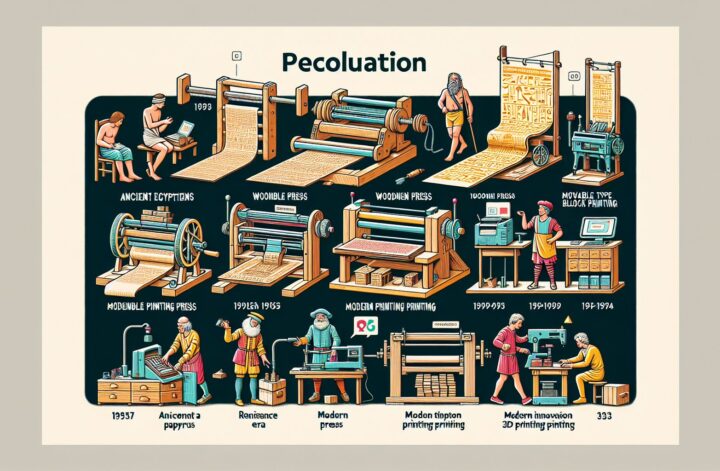Printed materials have been an essential part of communication for centuries. From books to brochures, leaflets to business cards, the physicality of print provides a tangible and lasting impression. But with advancements in technology and the rise of digital media, printing materials have also evolved.
In this comprehensive guide, we will explore the various printing materials available today, their unique characteristics, and how they can be effectively used for different purposes.
Introduction to Printing Materials
Printing materials refer to the substrates on which graphics and text can be reproduced using various printing techniques. These materials have different properties that affect the overall print quality, durability, and cost-effectiveness. Choosing the right printing material is crucial for obtaining the desired outcome for any print project.
Common Printing Materials
Paper
Paper is the most widely used printing material due to its affordability, versatility, and recyclability. There are numerous types of paper available, each with its own weight, texture, and finish. Here are some commonly used paper types:
- Bond Paper: A lightweight paper suitable for everyday office printing and photocopying.
- Matte Paper: Provides a non-glossy, smooth finish, ideal for presentations and documents.
- Glossy Paper: Delivers a vibrant, reflective finish, commonly used for brochures and photographs.
- Cardstock: A heavier and thicker paper, perfect for business cards, invitations, and postcards.
- Recycled Paper: Environmentally friendly, made from recycled materials, and suitable for various print applications.
Cardboard
Cardboard is a sturdier and more rigid printing material made from thicker paper fibers. It is commonly used for packaging, displays, signage, and other applications requiring durability and rigidity. Different grades of cardboard are available, such as corrugated cardboard for shipping boxes and folding carton board for consumer product packaging.
Synthetic Materials
Synthetic printing materials are manufactured using synthetic polymers, offering excellent durability and resistance to water, tears, and fading. Some popular synthetic materials include:
- Vinyl: A flexible synthetic material commonly used for banners, posters, and outdoor signage.
- Polypropylene: Provides a lightweight yet durable option suitable for banners, stickers, and labels.
- Polyester: Known for its tear resistance, polyester is ideal for outdoor applications like flags and backdrops.
Fabrics
Printing on fabrics has gained popularity due to its unique and eye-catching appeal. Fabrics are often used for banners, flags, backdrops, and apparel. The commonly used fabric materials include cotton, polyester, nylon, and canvas. Each fabric type offers different levels of durability, texture, and color vibrancy.
Metal
Printing on metal materials can create a sleek and modern look, making it suitable for signage, panels, and displays. Aluminum is a popular choice due to its lightweight nature, corrosion resistance, and versatility. Printing on metal surfaces usually involves a specialized process, such as dye-sublimation or direct printing, to ensure long-lasting and vibrant results.
Plastics
Printing on various plastic materials opens up possibilities for creating unique and customized products. PVC is frequently used for items like ID cards, credit cards, and loyalty cards. Acrylic is another popular choice, providing a transparent and high-gloss surface for printing signs, displays, and custom products.
Choosing the Right Printing Material
Selecting the most appropriate printing material for a specific project involves considering several factors:
Purpose and Environment
Understanding the purpose of the printed material and its intended environment is crucial. Will the print be exposed to outdoor elements, high humidity, or extreme temperatures? Determining the environmental conditions helps to identify the most suitable material with the desired durability and resistance.
Print Quality
Different materials produce varying print results. Depending on the desired outcome, some materials may enhance or hinder the print quality. For vibrant and high-resolution prints, glossy paper or synthetic materials are often recommended, while matte surfaces may be preferable for a more subdued and professional look.
Durability
Consider the expected lifespan of the printed material. If longevity is essential, synthetic materials, metals, and certain fabrics are excellent choices as they offer resistance to weathering, tearing, and fading. For short-term promotions or temporary displays, paper or cardboard may be more cost-effective options.
Budget
Printing materials vary in cost, and the desired quantity and project scale influence the overall budget. It is crucial to strike a balance between print quality, durability, and cost-effectiveness while staying within budget constraints.
Conclusion
In the ever-evolving world of printing, choosing the right materials for each project is crucial to achieve the desired outcome. Each printing material brings its own unique characteristics, advantages, and applications. Whether it’s paper, cardboard, synthetic materials, fabrics, metal, or plastics, understanding the purposes and traits of these materials empowers designers and marketers to make informed decisions that lead to successful print projects.
Remember to consider factors such as purpose, environment, print quality, durability, and budget when selecting the ideal printing materials. With the right materials at your disposal, your printed designs will surely make a lasting impression.


